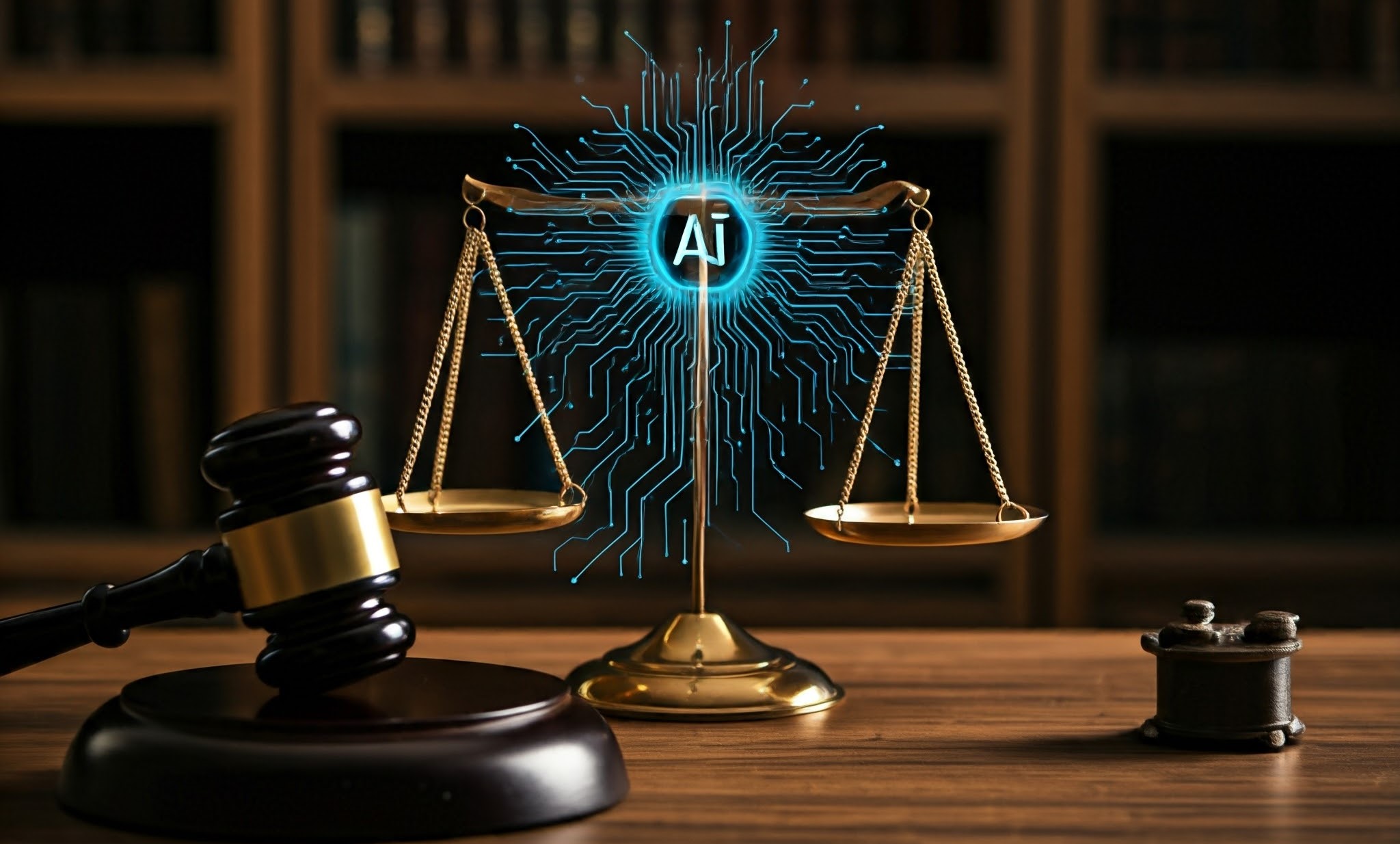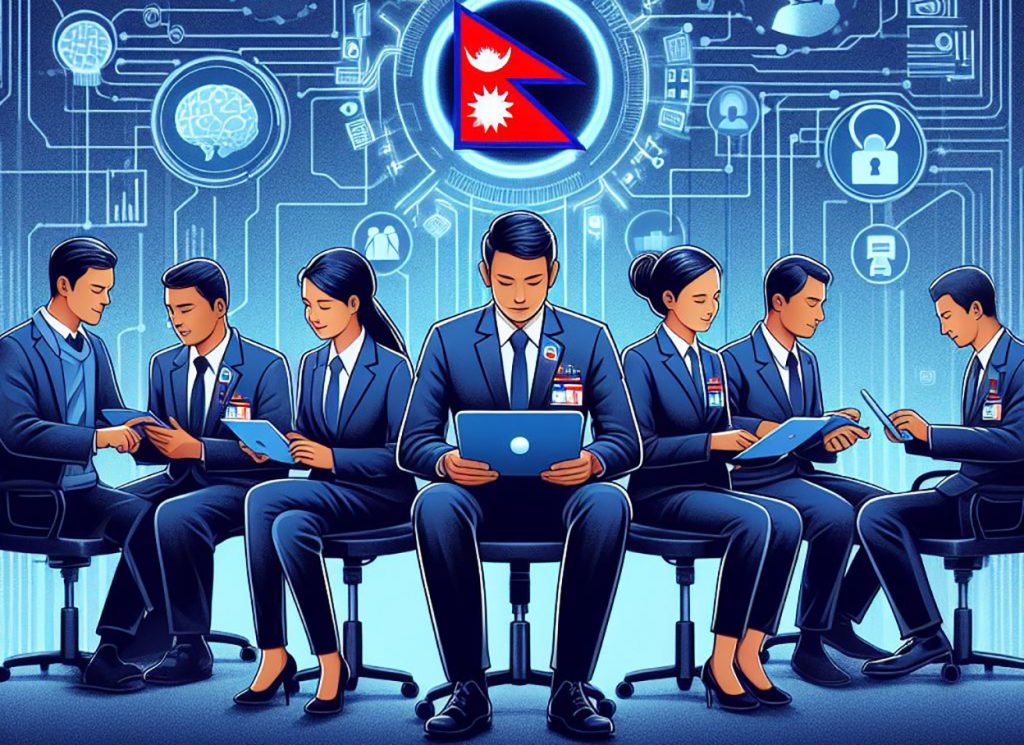
Various scholars worldwide such as Simon Chesterman, Frank Pasquale, and Sara Gerke are arguing about the personhood of artificial intelligence (AI)-based technology and its implication in the legal sector. Dena Dervanovic, in his article— The Inhuman Lawyer: Developing Artificial Intelligence in the Legal Profession—discusses the AI lawyer.
The increasing discourse on AI in law worldwide has raised the question and made us intrigued to think about AI and its implication in Nepali law. But this discussion is not as easy as it is in developed countries for developing nations like Nepal.
AI in governance and law
Nepal is in the process of enhancing its governance system to introduce digitalisation in every aspect of governance, including the judiciary. In 2017, the Supreme Court of Nepal launched the Supreme Court app that can easily help the lawyers and clients of the case with the date of presence in the court, the status of ongoing cases, find the decision of the case, and many more features. This has eliminated the traditional practice of printing and pasting the details outside the court for information such as knowing when to be present and which bench to approach to represent the case.
These positive trends in development in the sector make us more optimistic about the implication of AI-based tools and programmes in Nepali laws.
The AI software available worldwide has created the discourse of AI and future lawyers. A Chinese robot named Xiaofa has been designed and created to provide suggestions on legal issues like visas, divorce, and counselling. DoNOT Pay is a robot lawyer who can help make legal documents and challenge traffic tickets. Apart from the lawyer, there is software developed with the help of AI, like Rocket Lawyer and LegalZoom, that allows clients to create their legal documents and forms in the US.
CCLIPS is another similar programme generally referred to as the civil code legal information processing system, which is developed to retrieve cases and relevant statutes. Similarly, CARA is a programme that helps summarise the law and memos. LexGeex, IBM’s Watson, Beagle, and Smart Contracts are the few other programs discussed by the researcher as having relevance in the legal sector worldwide.

Application in Nepal
In the developing phase of the digital phase, it is very essential to know the AI-based software that can assist lawyers and judges if it is used properly. There are some areas where AI can be introduced in Nepali law also to assist lawyers.
So how?
- Legal research: AI applications like ROSS can assist Nepali lawyers by making legal research fast and easy. Researching laws and relevant articles is essential for lawyers and AI tools can help them do it quickly. R-discovery-like applications are easily available in the PlayStore, which shortlists the research papers as per your interest areas.
- Document management: The main problem in Nepal’s judiciary is linked to the management of traditional documents and modernising them. The application can be used both to modernise and organise the Nepali laws that are necessary for litigation. Alpha, developed by iCourt, is based in China and assists in the automation of cases and documents.
- Contract drafting: One of the potential areas for AI in Nepali law is drafting day-to-day household contracts as per the needs of the clients. Various software programs can be developed with standard templates that can assist the techno-friendly audience to easily avail of the format as per their needs. For example, the Kira system, designed in the USA, can help the lawyer conduct a contract review and reduce the risk of error. India uses Spotdraft software to check the contract.
- Client counselling service: AI can be another way for service delivery. In Japan, an AI-based machine gives the client service by providing the details of the fine and punishment based on the crime asked for by the client. Most courts, government offices, law firms, lawyers, and prosecutors can have their burdens reduced if the right AI equipment is made available in the office that explains the actual violation of rights and the punishment associated with it as per the Nepali laws.

Challenges
With ample scope for interlinking AI in Nepali laws, various challenges need to be addressed.
Some of them are discussed below:
- Not accepted by legal professionals: There is a lack of acceptance of the scope and importance of AI in Nepali laws, even among legal professionals. AI is not accepted by law firms or society as a whole as there is a misconception among legal professionals that AI can replace lawyers. This myth has created a huge challenge for the acceptance of AI in the field. In addition, there is a lack of proper human resources to address the importance of AI in the legal sector in Nepal.
- Lack of knowledge: Many people working in the Nepali law sector are not familiar with AI-based tools. It has created challenges for its users. Familiarising yourself with AI software is the solution to developing and enhancing knowledge about AI. Rather than the lack of proper data collection and sharing, Nepal is far behind in the storage of data. Like blood to the human being, AI needs data to perform. This is another challenge for the implementation of AI.
- Low investment and expensive: A few new companies in Nepal have started to work in AI, but they do not specialise in the use of AI in Nepali laws and there is no investment as such in the legal field. There is a lack of investment from the government sector too in relation to these areas.
So what?

Incorporating legal matters into AI can help Nepali law firms as well as law enforcement officials solve their day-to-day problems. Looking at the worldwide trend and increasing AI software, we can generalise that Nepal will also sooner or later need to introduce AI-based tools to enhance the legal fields, like the judiciary, and law firms, with advancing Nepali search engines.
Having various scopes of AI in Nepal, we still see ongoing challenges in the legal system of Nepal. Introducing applications through technology transfer with the assistance of international organisations can be a game changer in terms of systematising Nepal’s legal system.
But before that, the government should focus on recruiting IT experts to deal with the ongoing digital transformation, similar to what is happening in China with Big Data in collaboration with Sandford.
IT-based companies should develop their modules in the Nepali language so that the general public can be benefitted. The discourse of AI replacing humans in the context of Nepal is irrelevant. However, we can use AI software to advance the legal system so that service mechanisms become stronger and are more dedicated to helping the client and delivering justice on time.
























